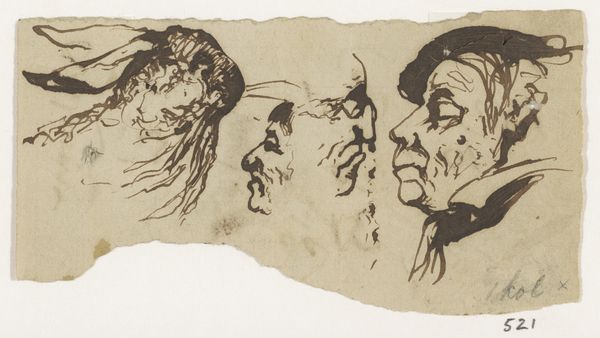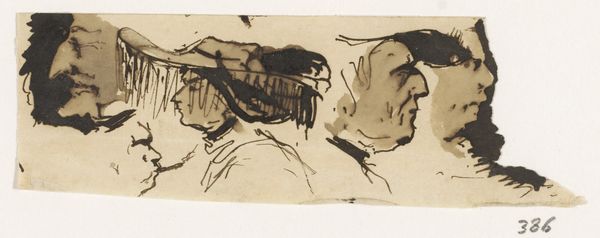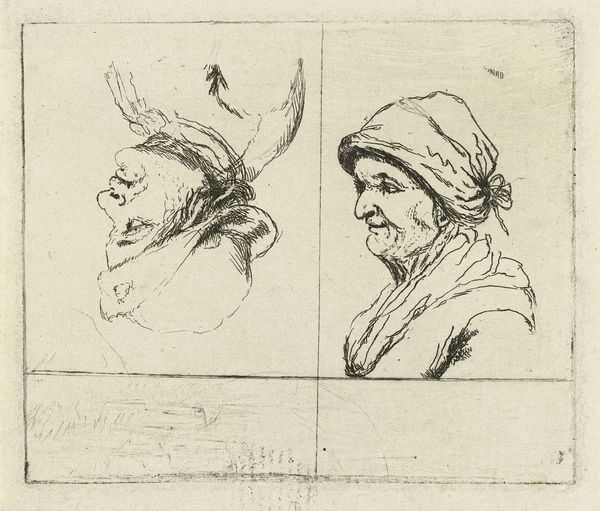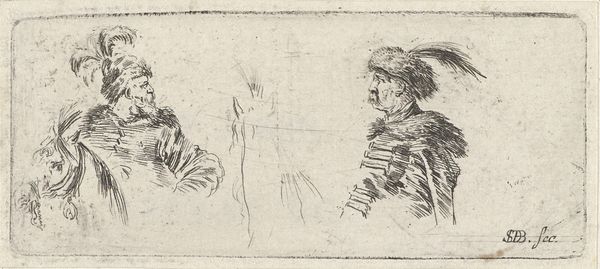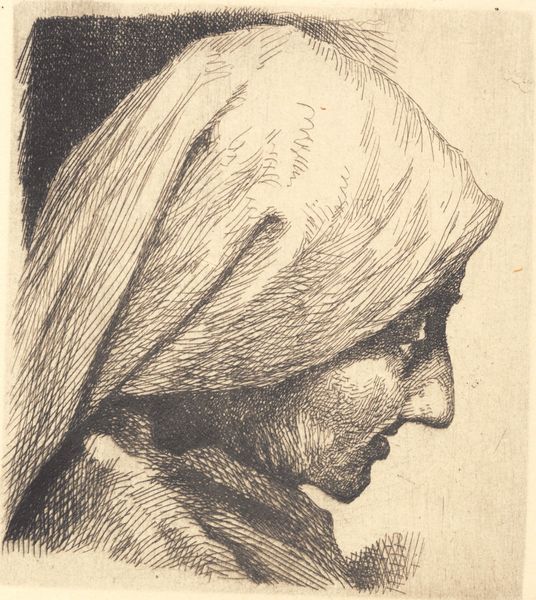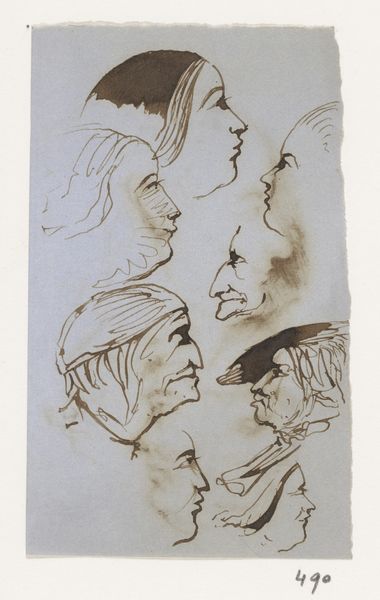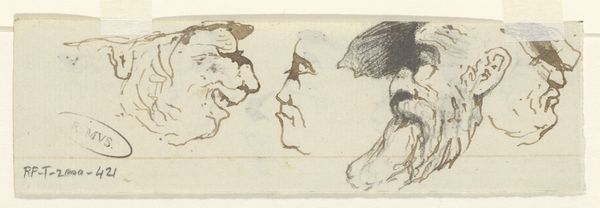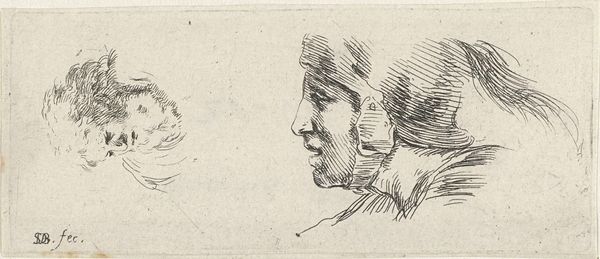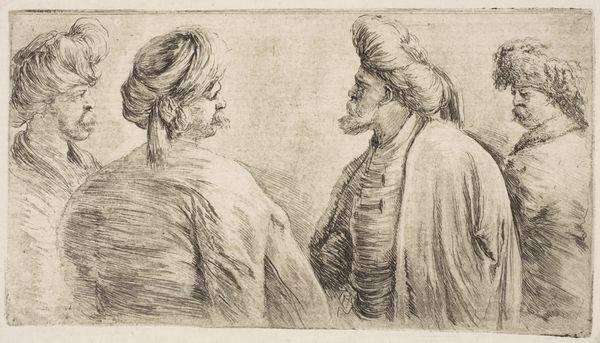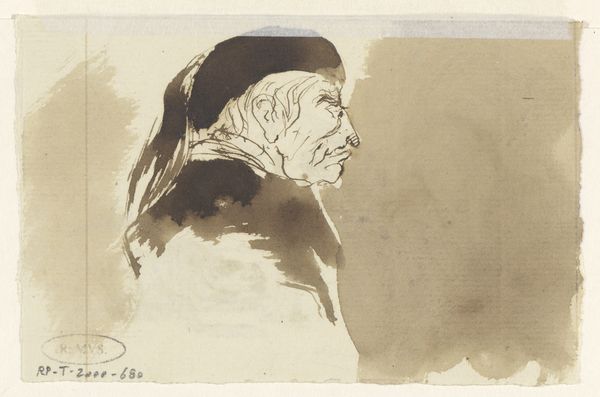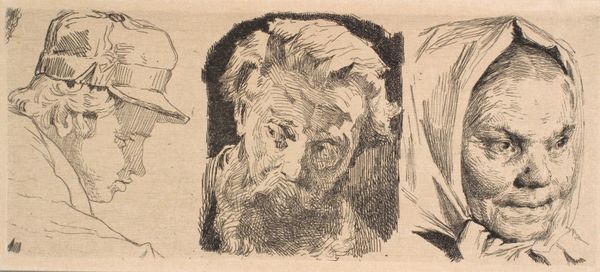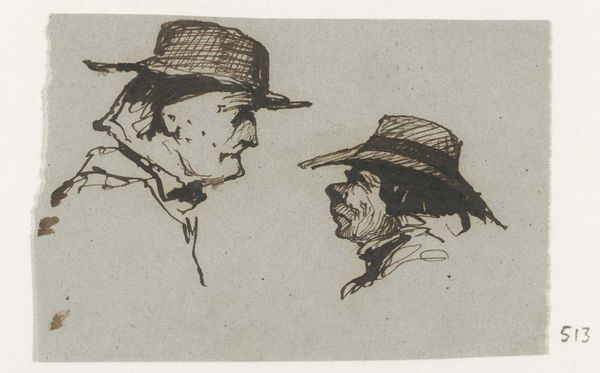
Portrait of an Old Peasant Woman, in Profile to the Right, and Peasant Woman with Closed Eyes Possibly 1874 - 1880
0:00
0:00
drawing, print, etching
#
portrait
#
drawing
# print
#
etching
#
charcoal drawing
#
pencil drawing
#
portrait drawing
#
realism
Dimensions: plate: 10 x 16.2 cm (3 15/16 x 6 3/8 in.) sheet: 21.9 x 27.1 cm (8 5/8 x 10 11/16 in.)
Copyright: National Gallery of Art: CC0 1.0
Curator: Before us is Wilhelm Leibl’s “Portrait of an Old Peasant Woman, in Profile to the Right, and Peasant Woman with Closed Eyes,” an etching from possibly between 1874 and 1880. What strikes you initially about it? Editor: The somber mood is undeniable. The print's monochromatic palette and the deep lines etched around the women's features evoke a life of hardship, of unrelenting toil. Their gazes, averted and closed, suggest a turning inward, perhaps born of necessity. Curator: Indeed, the technical precision is noteworthy. Leibl’s mastery of etching captures the textures of skin and fabric with impressive detail, creating a remarkable play of light and shadow on these weathered faces. Observe the economy of line, achieving a monumentality in these small portraits. Editor: But isn't this careful attention also Leibl's means of highlighting their social position? In rendering the etched lines, is Leibl emphasizing the effects of poverty and disenfranchisement, the deep furrows etched by hardship, etched by gender, by the rural class structures of 19th-century Germany? It forces us to reckon with a population often overlooked in grand narratives. Curator: Undoubtedly, but consider also how Leibl balances the two figures, almost mirroring one another within the composition. It produces a self-contained visual dialogue independent of socio-historical conditions. Editor: I think it’s hard to ignore those socio-historical conditions, particularly when the artist chooses specifically to represent women, particularly of a certain class—it speaks volumes about what stories are considered worthy of preservation, of observation, of honor. The choice of medium, print, further implies a wish for the diffusion and popularization of this image—for mass consumption—for our active viewership. Curator: You posit interesting arguments. Perhaps Leibl sought to elevate this population through art that he would diffuse. Editor: And so perhaps it functions for us, now, as an interrogation, perhaps a reflection. A recognition of the complex interplay between representation and reality, and the stakes involved in seeing—really seeing—the lives of others. Curator: A potent interpretation indeed. The work, regardless of intention, speaks for itself.
Comments
No comments
Be the first to comment and join the conversation on the ultimate creative platform.
